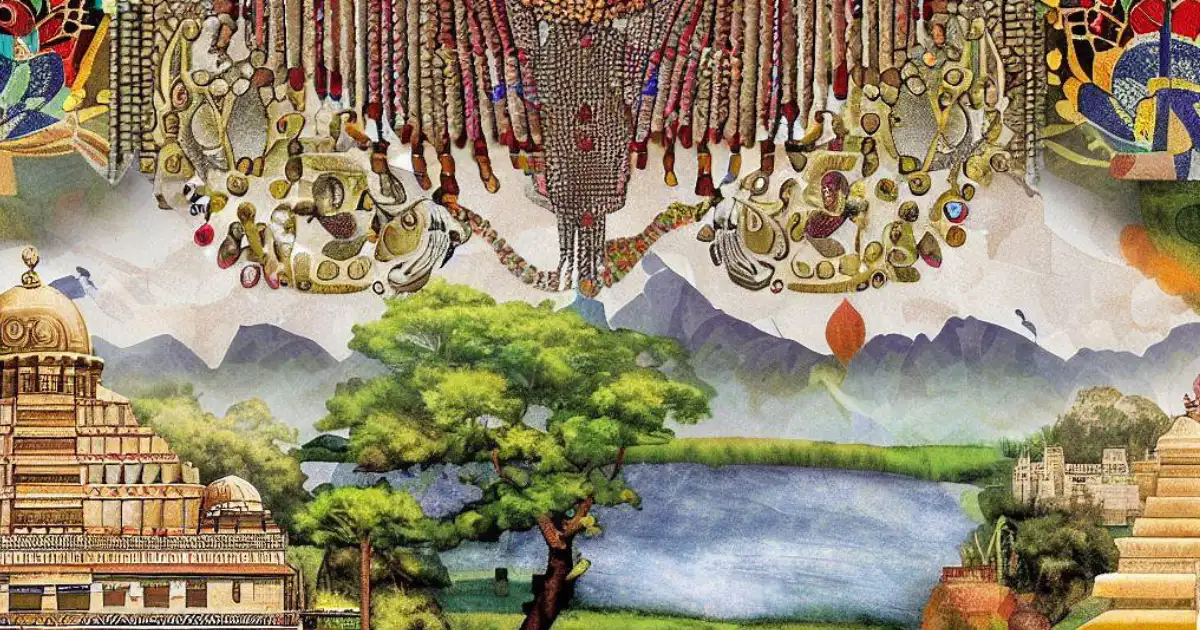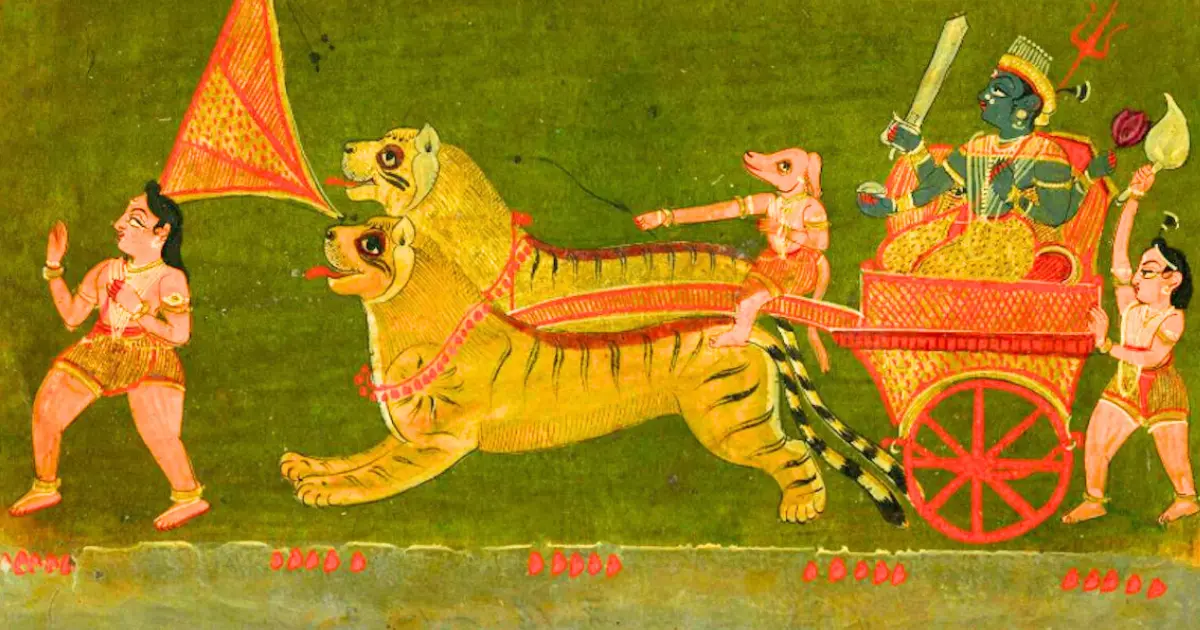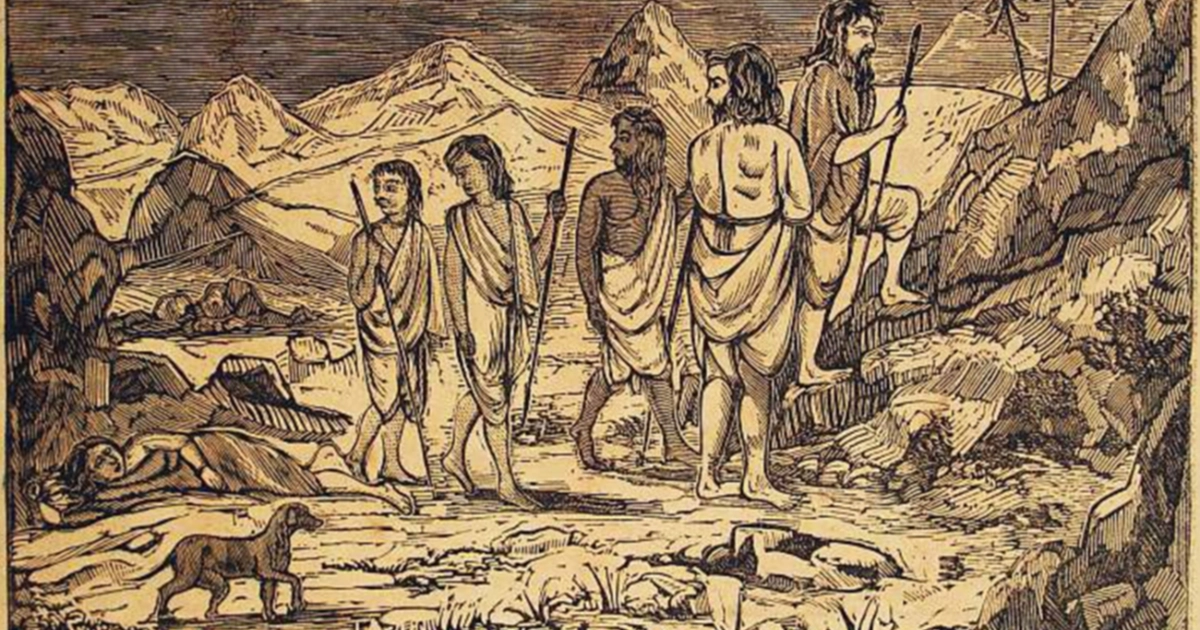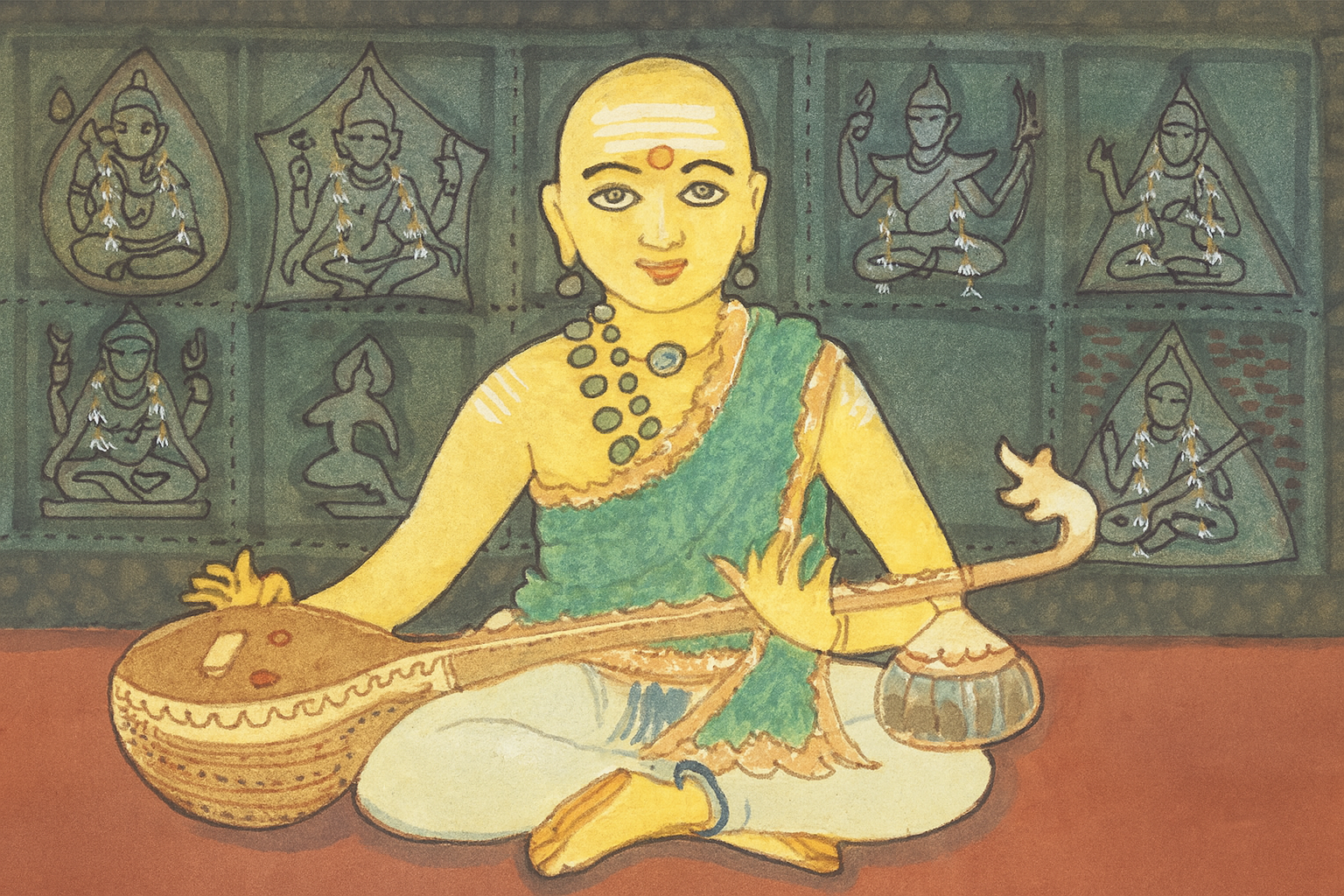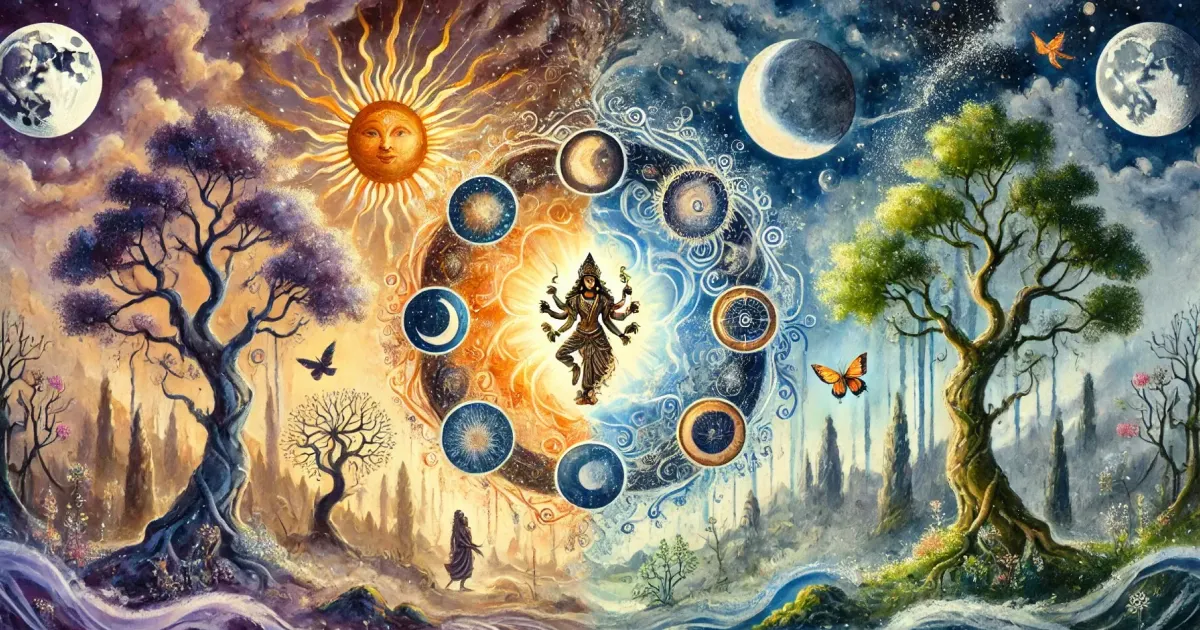The beauty of the necklace exceeds that of nectar and pearls, So says Avvaiyār, skilled in speech. Avvaiyār (Tamil: ஔவையார்), from Avvai Kuṟaḷ
Adorning the large bosom with radiant necklaces, I praise you, Tāḷḷapāka Timmakka, the embodiment of devotion. Verse from Tāḷḷapāka Tirumalammā (తాళ్ళపాక తిరుమలమ్మ)'s Composition
In the resplendent medleys of ancient India, where culture, tradition, and artistry intertwined harmoniously, one cannot help but be captivated by the allure of necklaces – those exquisite adornments that graced the necks of royalty, priestly scholars, and common folk alike. Originating in the mists of antiquity, the genesis of necklaces can be traced back to the dawn of Indian civilization itself. In the ancient subcontinent, where craftsmanship was elevated to a divine endeavor, the concept of embellishing the neck with precious metals, gems, and beads emerged as an embodiment of cosmic symbolism. Just as the divine cosmic serpent, Ādiśeṣa, encircled the cosmos, so too did necklaces encircle the necks of humans, bestowing upon them a semblance of the divine order.
As time unfurled its wings, the evolution of necklaces mirrored the dynamic shifts in societal norms, artistic influences, and cultural exchanges. From the early ages, necklaces were crafted from elements that ranged from rudimentary shells and polished stones to ornate gold and intricately carved gems. Each material carried with it a distinct narrative – the elemental purity of nature, the opulence of royalty, or the mystical aura of spirituality.
The ancient texts of India, composed with eloquence and grace, have immortalized the essence of necklaces in both poetic verses and philosophical treatises. The Ratna-Parīkṣā, a gemological treatise, expounds upon the art of crafting necklaces adorned with the finest gemstones, attributing to each gem a unique cosmic resonance that harmonizes with the wearer's spirit. The Maṇi-Mālā, a revered poetic work, metaphorically extols the necklace as a garland of aspirations that adorns the soul, much like fragrant flowers embellish the body.
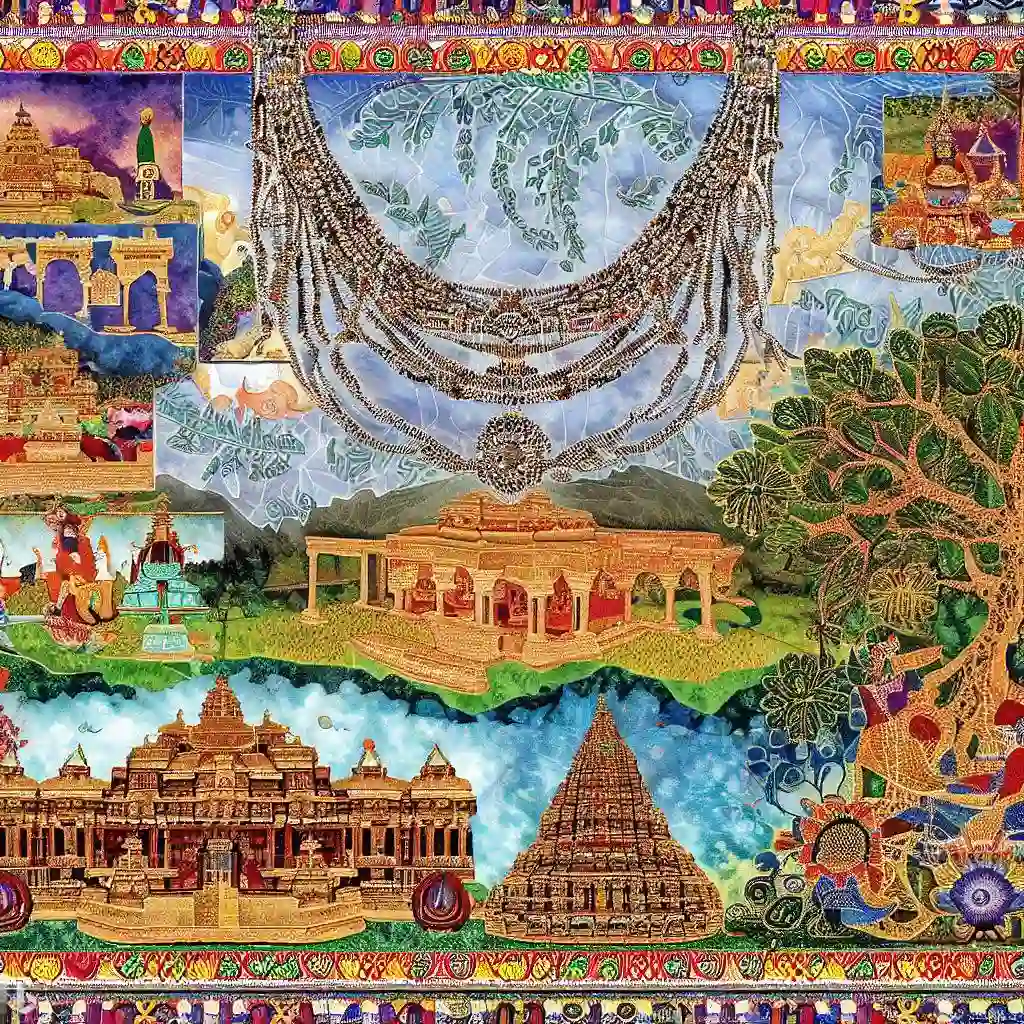
The Vedas, those ancient hymns of cosmic wisdom, too, unfurl verses that liken the necklace to a protective amulet, symbolizing the interplay of the celestial and terrestrial realms. As the sacred thread unites the individual with the divine, so does the necklace bridge the realms of the seen and the unseen, invoking blessings and safeguarding against malevolent forces.
Through the epochs, necklaces transcended their role as mere adornments and embraced the realm of rituals, ceremonies, and sacred traditions. They graced the necks of deities in temple sanctums, adorning idols with divine opulence. They adorned the necks of sages and scholars, bestowing upon them an aura of wisdom and venerability. In the courts of ancient monarchs, necklaces were not just symbols of affluence but expressions of diplomacy, exchanged as tokens of goodwill between kingdoms. The necklace, draped around the neck of a bride, became an emblem of marital union, signifying the eternal bond of love and companionship.
In the artistic renderings of ancient India, sculptures and paintings etched necklaces into history's canvas. They depicted elaborate designs, each imbued with cultural motifs and regional aesthetics. The nakṣī technique, renowned for its intricate engraving, adorned necklaces with motifs drawn from nature – floral patterns, leaves, and vines – intertwining the human spirit with the essence of the natural world.
Necklace as a Metaphor of Love in the Classical Indian Literature
In devabhāṣā Saṃskṛtam, the term हार (hāra) unfolds a rich tapestry of meanings, particularly as a poignant symbol of love. The etymological roots of हार can be traced to the ancient Saṃskṛta root हृ (hṛ), signifying to take away or to seize. Thus, the word हार initially embodied the act of taking or carrying away, gradually evolving to encompass diverse shades of meanings including a necklace, a garland, a loss, and a symbol of endearment.
In the classical Saṃskṛta literature of the post-Vaidika and Paurāṇika periods, the term हार began to adorn the verses of poets like Kālidāsa, Māgha, and Bhavabhūti. These poets, often celebrated for their intricate wordplay and evocative imagery, employed हार in various contexts to evoke emotions, symbolism, and themes.
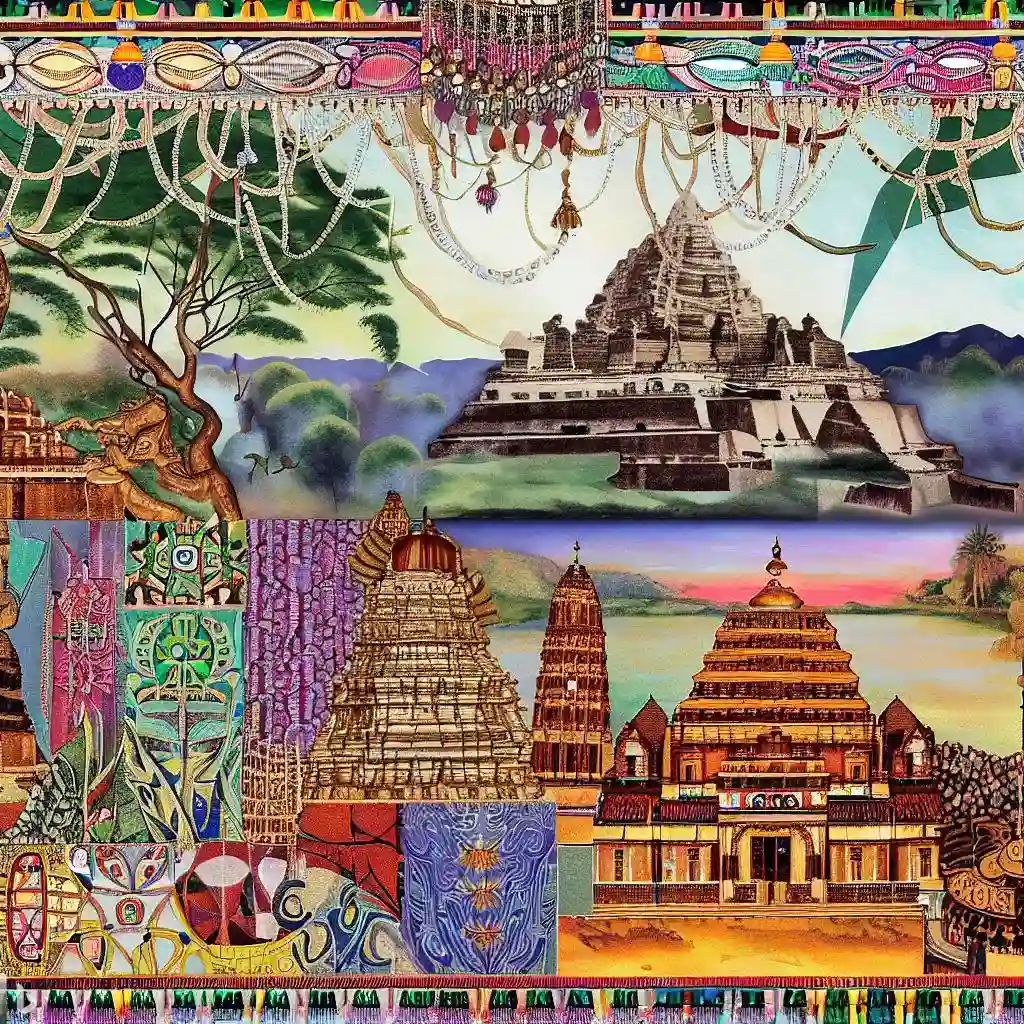
In their enchanting verses, the necklace, or hārikaṇṭha, sparkles as a symbol of unity between beauty and emotion. It mirrors the interconnectedness of life's moments, much like the glistening gems strung together, creating a tapestry of sentiments. The celebrated poet Kālidāsa, in his magnum opus Meghadūtam, invokes the necklace as a messenger of love across distant realms.
To the north, where distance blends with infinity, Where your knowledge falters, my teary eyes shall guide. One pearl, adorned with a drop of my white tears, Shall tell the tale of my woe.
In another verse from Raghuvaṃśam, Kālidāsa masterfully compares the radiant pearls on a necklace to the cool, moon-like faces of women loved by the lord of gods, Śiva. However, he suggests that the swaying Mādhavī creeper, representing a woman's beauty, possesses a charm even more enchanting than the pearls.
Even though a multitude of pearls, strung together, Adorn the necklace of the cool full-moon faces of women dear to the lord of gods, Yet the Mādhavī creeper, swaying in the wind, bestows a sweeter allure. Kālidāsa, in “Raghuvaṃśam," Canto 10, Verse 45
In another verse of Kālidāsa's magnum opus Meghadūtam, the हार assumes a romantic hue, symbolizing the bond between separated lovers. The poem's yakṣa describes the celestial ornaments adorning Mount Kailāsa, including the हार (garland) of rain-clouds – a metaphor for the lover's longing that transcends distance. Similarly, Māgha, renowned for his epic Śiśupāla-Vadha, employs हार to portray the grandeur of royal celebrations. The term embellishes descriptions of precious gem-studded garlands adorning warriors, exemplifying regal opulence. In Bhavabhūti's Mālati-Mādhava, हार takes on a poignant role. It becomes a symbol of separation and longing, resonating with the themes of love and tragedy that unfold in the play.

Throughout these literary works, a garland or necklace often becomes a metaphor for love's yearning, the bond between lovers, or the adornment of deities and royalty, emerging as an eloquent symbol of love's ardor, emotional richness, and enduring human connection. Its evolution from its humble origins to its elevated symbolism reflects the dynamic nature of Saṃskṛta language and culture.
In the verses of Tamil literature, the mālai or necklace signifies the delicate balance between earthly desires and spiritual aspirations. Much like the pearls on the necklace, which are individually exquisite yet together form a harmonious whole, these verses celebrate the harmony between human longings and the quest for higher truths.
Marriage adorns the necklace, And fame encompasses the world. Through the union, it is stated, The Vedas gain a verse of illumination. Adapted from Puṛanānūṟu (Poem 33)
With splendor that rivals the rainbow's hue, a necklace from a nobleman, Like honey that drips from flowers, it entices my yearning heart and eyes. Verse from Kapilar's Kaliththogai
If a necklace adorns the neck of her who adorns her home, It is as though the necklace itself lives a life. Tirukkuṟaḷ, Couplets 95-96
In this verse from the Tirukkuṟaḷ, the necklace is not just an adornment, but a representation of the essence and identity of the person who wears it. The metaphor emphasizes how the necklace becomes an extension of the person's life, highlighting the intricate interplay between individuality, adornment, and existence.
In the poetic tapestry of Telugu literature, the necklace, or haritalu, weaves stories of elegance and emotional resonance. Each bead on the necklace becomes a metaphor for the moments that string together the experiences of life. In the verses of Telugu literature, the necklace is a motif of grace, akin to the melodic notes of a song. Just as each bead contributes to the beauty of a necklace, each word in these verses is a gem adding to the allure of the composition. The necklace becomes a symbol of eloquence and aesthetics.
In the necklace of gems that captivates love's desire, In the restlessness of longing, it draws us near. Stringing the beads of affection's threads, It forms the bonds of connection in our hearts. Verse from Annamācāryā's Composition
In yet another verse, necklaces, made of the radiant pearls and gems illuminate the poetry, reflecting the multifaceted nature of human experience.
Laziness is the nectar-filled ocean, the heart's abode is like gold, The beloved of Manmadha (Cupid) resides in my heart's depth, The mind's desire is a fragrant vine, and intoxication is its flower, The roots of this ornate necklace are the precious gems of desire. Verse from Annamācāryā's Composition
Footnotes
- Image Courtesy: Midjourney by Satyajeet Ojha
